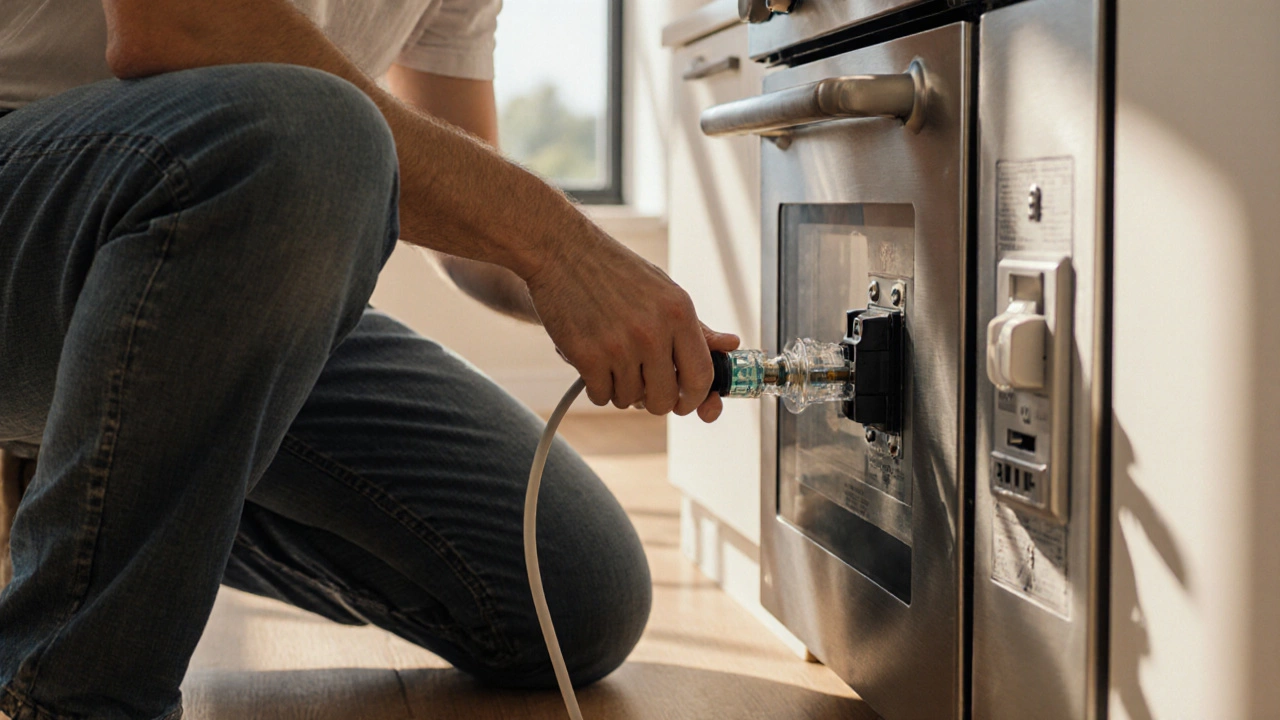When dealing with oven fuse, a small safety component that cuts power to the oven’s heating circuit when current spikes. Also known as oven safety fuse, it protects your kitchen from fire and electrical damage. The fuse works hand‑in‑hand with the oven heating element, the metal coil that actually gets hot and cooks your food and the oven thermostat, the device that monitors temperature and tells the element when to turn on or off. If the element draws too much current, the fuse blows, stopping the flow and preventing the thermostat from receiving false signals. This simple chain – fuse protects element, element follows thermostat – keeps the oven safe and functional.
So, why does a blown oven fuse happen? Common triggers include a failing heating element that starts drawing extra amps, a short in the wiring, or a power surge from the mains. When the fuse blows, the oven will refuse to heat, but the display and lights may still work because they’re on a separate low‑voltage circuit. That mismatch often confuses homeowners: the oven looks alive, yet nothing bakes. Spotting the problem early saves you from repeatedly trying to cook on a dead oven and from risking further damage to the thermostat or control board.
First, unplug the appliance and verify that the outlet is supplying power with a tester. Next, locate the fuse – usually inside the rear panel or behind the oven door, mounted on a small metal strip. Pull the fuse out and inspect the thin wire inside; a clean break or a darkened, melted spot means it’s blown. Before swapping it, you can quickly test the heating element with a multimeter; continuity indicates the element is still good. If the element shows an open circuit, replace it first – otherwise the new fuse will blow again. The thermostat should also be checked for proper resistance values; a faulty thermostat can overload the circuit just like a burnt element.
When you have the right replacement, match the amperage rating exactly – most domestic ovens use a 5 A or 10 A fuse. Install it firmly, re‑assemble the panel, and plug the oven back in. Turn it on and watch for heat to return. If the oven still won’t heat, you likely have a deeper issue such as a damaged thermostat or a wiring short, and calling a qualified technician is the safest route. Remember, working with mains electricity is risky; if you’re unsure at any step, professional help is the smart choice.
Below you’ll find a curated set of articles that walk through checking a fuse, diagnosing heating‑element problems, understanding thermostat behavior, and keeping your oven safe. Whether you’re a DIY enthusiast or just want to know what to expect from a repair call, the posts will give you clear, practical advice to get your oven back in action.

Learn why your electric oven suddenly stopped working, diagnose power, element, thermostat or safety fuse issues, and decide when to DIY or call a repair professional.

Find out why your hot water vanished, walk through quick DIY checks, learn simple fixes, and know when to call a professional for reliable heat restoration.

Trying to figure out if you need a ventilation fan or an extractor fan? This article breaks down the differences between the two, explains how each one works, and shares tips for choosing and maintaining the right fan for your home. You’ll also pick up advice on recognizing issues, making easy repairs, and knowing when it's time to replace. If you’ve got problems with humidity, bad smells, or stuffy air, this guide is for you.

Ever found yourself standing in front of a stubborn washing machine that just won’t cooperate? It can be frustrating, right? This practical guide walks you through the simple steps to reset your washing machine, saving you from unnecessary headaches. From spotting common issues to quick fixes, you'll find all you need to get your washer back on track.

Ovens are essential in any kitchen, but they can sometimes act up. Whether it's uneven cooking, a door that won't close, or strange noises, there's usually a straightforward explanation—and solution. This article delves into typical oven issues, offers handy tips to troubleshoot them, and suggests when it's time to call a professional. Knowing these basics can help keep your oven running smoothly.

Wondering if you can change your kitchen extractor fan yourself? This guide covers steps, safety, tools, common mistakes, and installation tips for a smooth DIY experience.